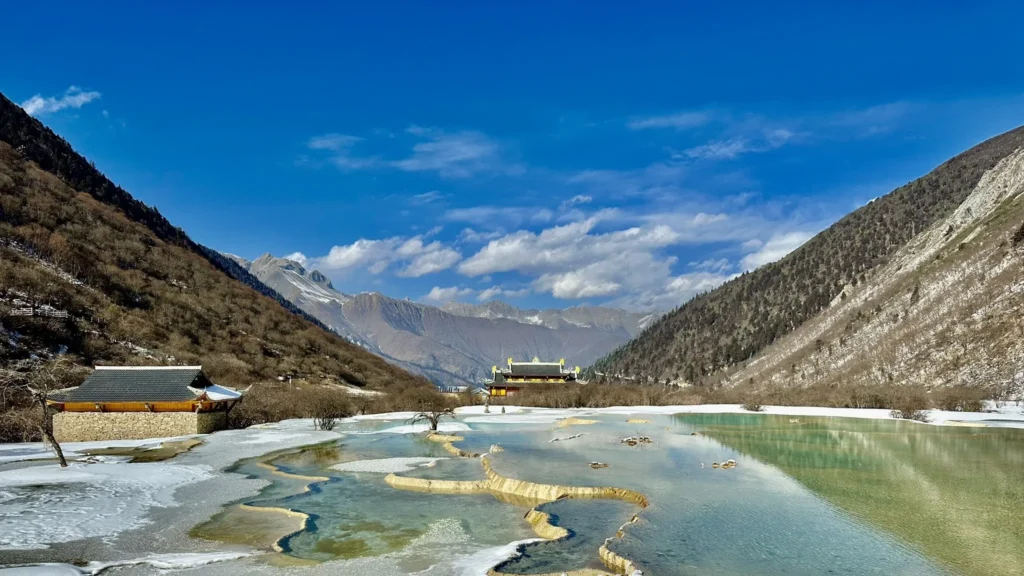
Sichuan (四川), whose name means “Four Rivers,” is one of China’s most fascinating provinces. Located in the southwest of the country, this region captivates travelers with its rich history, stunning natural landscapes, cultural heritage, and, of course, its world-famous cuisine.
Located in southwest China, Sichuan borders Qinghai Province and the Tibet Autonomous Region to the west, Gansu and Shaanxi Provinces to the north, Chongqing to the east, and Yunnan and Guizhou to the south. Its strategic location historically made it a crucial bridge between central China and the Tibetan and Southeast Asian regions.
Sichuan is one of those destinations that allows you to experience a wide variety of landscapes and cultures in a single province, boasting some of the most stunning natural scenery on the Asian continent.
Sichuan’s Diverse Geography
Sichuan’s geography is extraordinarily diverse. The province is clearly divided into two parts: the Sichuan Basin to the east, a fertile plain surrounded by mountains, and the mountains and plateaus to the west, which form part of the Tibetan Plateau.
This peculiar geographical configuration has given rise to the famous saying “Sichuan is difficult to reach, like heaven” (蜀道难,难于上青天), due to the mountains that historically isolated the region.
Sichuan’s climate also has unique characteristics. The Sichuan Basin is known for its hot and humid summers and mild but foggy winters with little sunlight. This climatic combination has contributed to the development of its exceptional biodiversity, making this province the natural home of the giant panda (大熊猫).
Main Attractions
Mount Emei and Leshan Giant Buddha
Mount Emei (峨眉山) is one of the four sacred mountains of Buddhism in China. Its centuries-old temples, lush forests, and spectacular views attract pilgrims and tourists year-round.
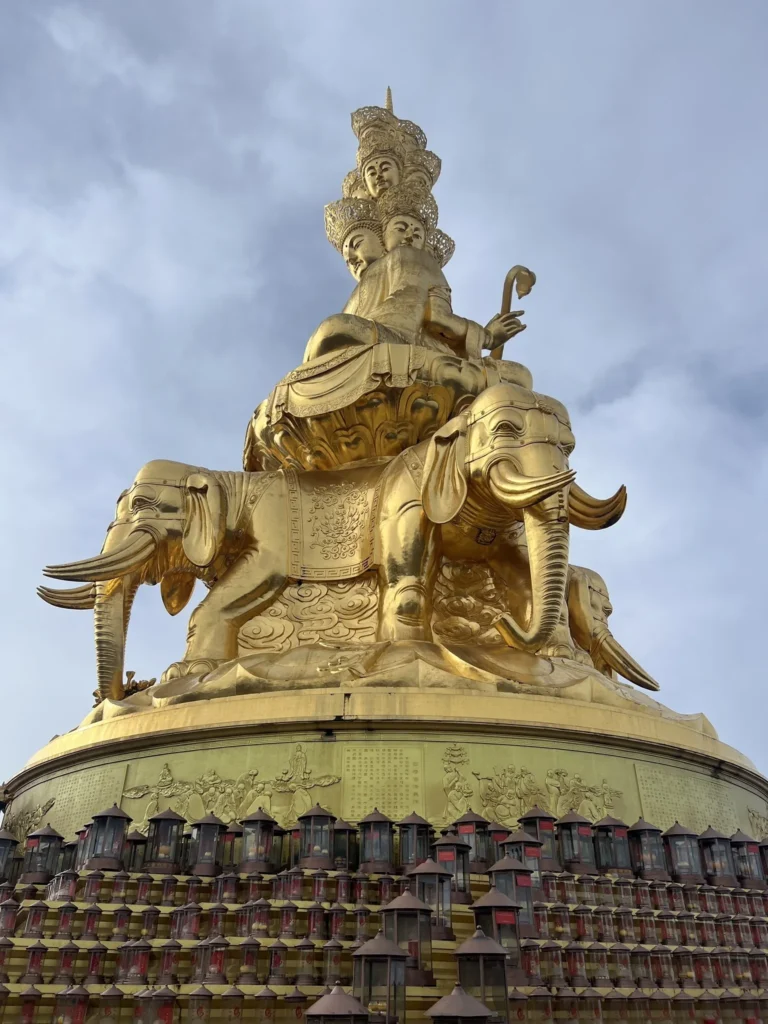
Nearby is the Leshan Giant Buddha (乐山大佛), a colossal 71-meter statue carved into a cliff during the Tang Dynasty and recognized as a UNESCO World Heritage Site.
Jiuzhaigou
The Jiuzhaigou Valley (九寨沟) is a spectacular nature reserve, one of the most beautiful places in China if you enjoy being in touch with nature. It is known for its turquoise lakes, tiered waterfalls, and old-growth forests.
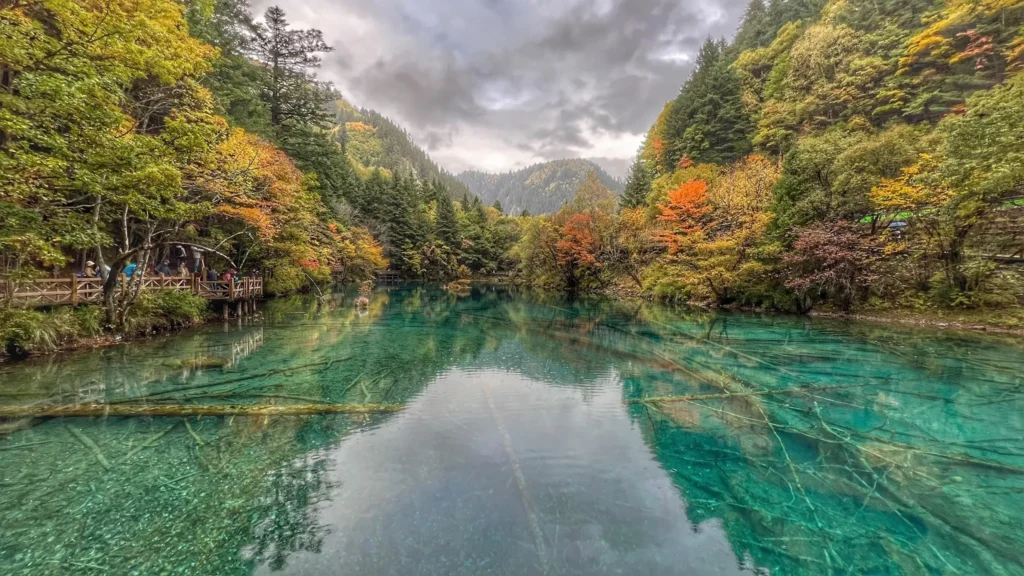
About 400 km north of Chengdu, it boasts mountains ranging in altitude from 2,000 to 4,500 meters.
This natural paradise, also a World Heritage Site, is at its most magnificent in autumn, when the foliage transforms into an explosion of color.
Huanglong
Huanglong (黄龙), which means “Yellow Dragon” in English, is one of Sichuan Province’s most spectacular natural treasures.
This national park, recognized as a UNESCO World Heritage Site, is located in the Minshan Mountains, about 150 kilometers from the city of Chengdu.
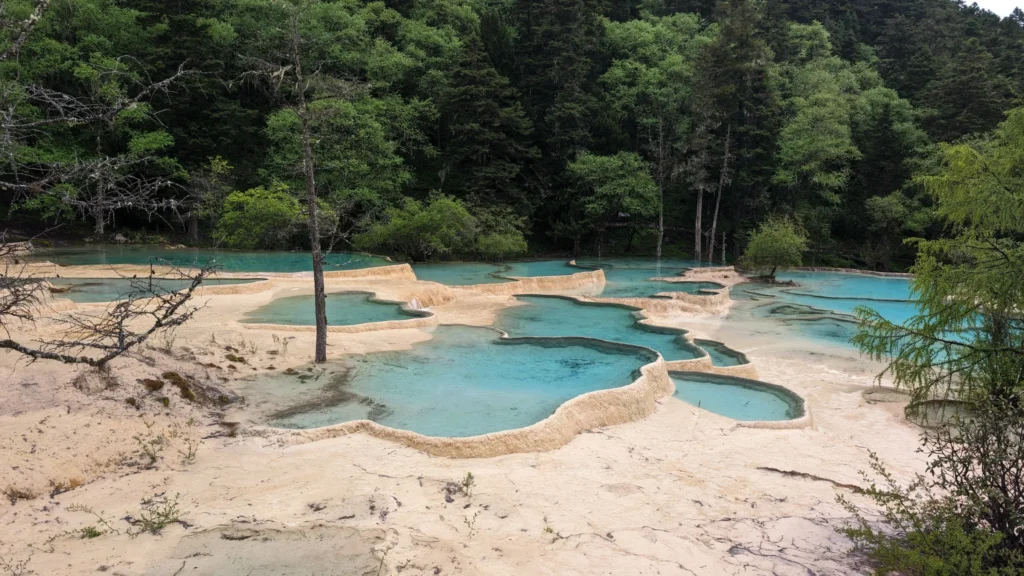
What makes Huanglong extraordinary are its stepped limestone formations that create travertine pools of intense turquoise and gold, resembling the scales of a mythological Chinese dragon descending the mountain.
These pools, formed over thousands of years by the deposition of calcium carbonate, stretch for more than 3.6 kilometers and are surrounded by virgin forests, snow-capped mountains, and rich biodiversity. Visitors who venture to this natural paradise, located at an altitude of over 3,000 meters, not only enjoy a landscape of breathtaking beauty, but also have the opportunity to appreciate the perfect harmony between water, mountains, and forest, fundamental elements in traditional Chinese cosmology.
Chengdu
Chengdu (成都), the capital of Sichuan, is a modern city that maintains its traditional charm. It is known for its relaxed lifestyle and its teahouses (茶馆), where locals spend hours chatting and playing mahjong.
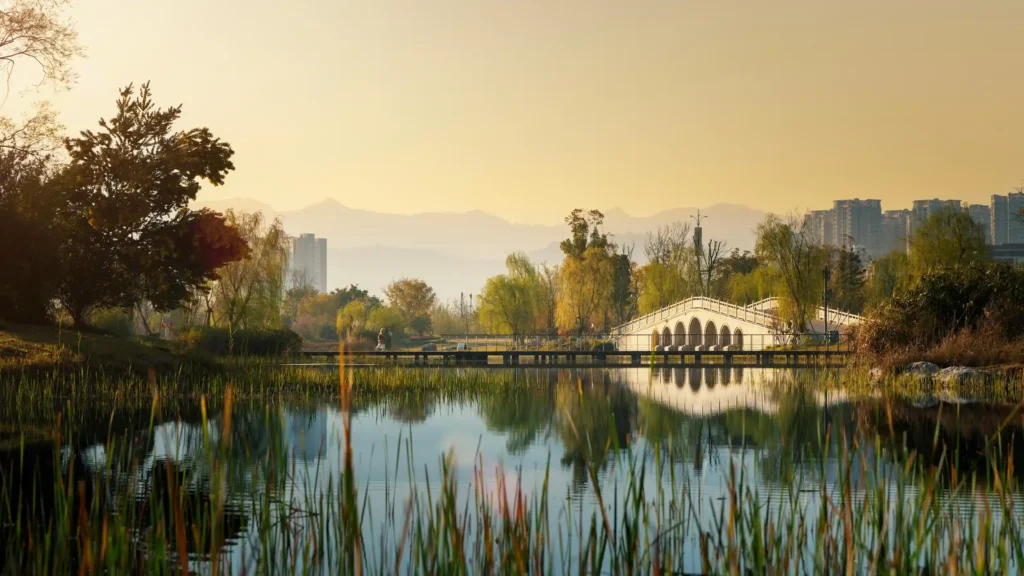


The Giant Panda Breeding Research Base (大熊猫繁育研究基地) is a must-see for a close-up look at these iconic animals in a natural setting.
Sichuan Cuisine
Sichuan cuisine is one of China’s Eight Great Culinary Traditions and has earned worldwide acclaim for its distinctive spiciness and the famous Sichuan peppercorn (花椒), which produces a unique numbing and spicy sensation known as “ma la” (麻辣).
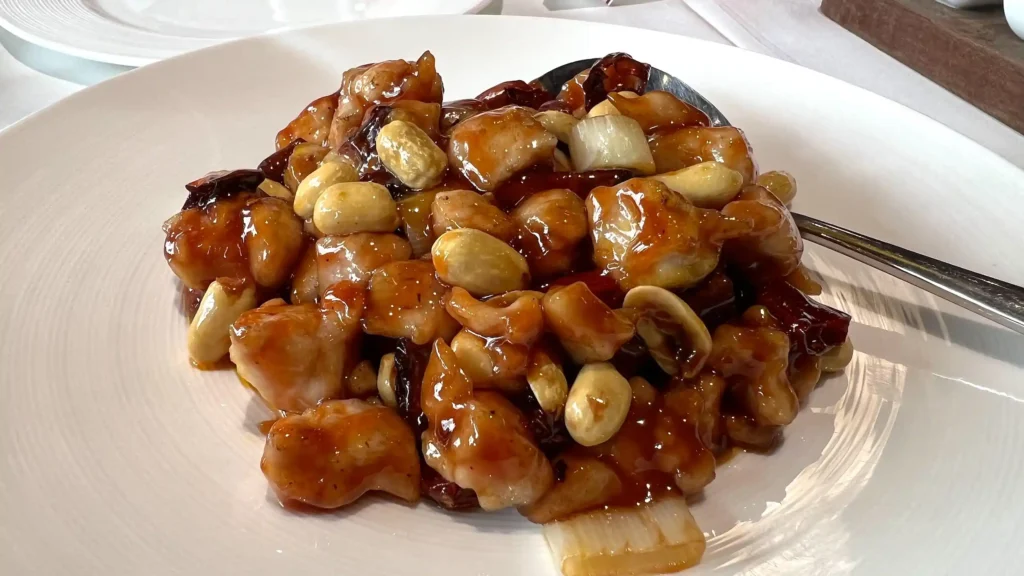
Among the most iconic dishes are:
Mapo Tofu (麻婆豆腐), a tofu dish with minced meat in a spicy sauce that embodies the essence of Sichuan flavor.
Szechuan Hot Pot (四川火锅), a social dining experience where diners cook various ingredients in an extremely spicy broth.
Gong Bao Chicken (宫保鸡丁), cubes of chicken sautéed with peanuts and chili peppers, a dish that has become internationally popular.
Dan Dan Noodles (担担面), noodles served with a spicy sauce of minced meat, vegetables, and the signature Sichuan peppercorn.
The diversity of cooking techniques and the ingenious use of spices have made Sichuan cuisine a national treasure with international acclaim.
Culture and Traditions
Sichuan culture is deeply influenced by its history as an independent kingdom. Sichuan Opera (川剧) is famous for the “mask changing” technique (变脸), where actors change their masks in fractions of a second.
Sichuan embroidery (蜀绣) is recognized as one of the four most important embroidery styles in China, distinguished by its vivid designs and refined techniques.
A Must-See Destination

Sichuan offers a unique combination of history, nature, culture, and cuisine that makes it a fascinating destination for travelers. From majestic natural landscapes to spicy local cuisine, this province offers memorable experiences that reveal China’s diversity and cultural richness.
Do you want to travel to Sichuan and enjoy all its attractions? Contact us and we will design the perfect experience for an unforgettable trip.
Image credits: Tom Fly, Snow Chang from Pexels.